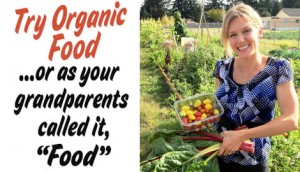When I first heard of organic produce, I assumed it was overrated, overpriced food that only hippies or picky eaters impractically justified splurging their budget towards. After all, why would someone spend twice the price for a “fancy apple” when its conventional counterpart looked perfectly fine? I am a bit wiser now.
Since then, I have learned that a single conventional apple can legally be contaminated with harmful chemicals like sewer sludge fertilizers, irradiation, synthetic additives and pesticides, and be genetically modified. Heavy metals such as cadmium, lead, and mercury easily enter our food supply through industrial pollution of soil, groundwater, and machinery. Highly neurotoxic solvents like benzene and toluene, found in products like nail polish, are often used in dissolving food components and produce food additives. Most of these chemicals are carcinogenic and extremely damaging to our long-term health.
Thankfully the Environmental Working Group (EWG) has removed the guesswork from identifying which produce are most contaminated through vigorous annual tests. Dubbed the, “Dirty Dozen, this list names the 12 worst offenders of pesticide residues on fruits and vegetables in descending order from greatest to least. While eating conventionally grown produce far outweighs the risks of not eating them at all, we can safeguard ourselves from over 80% of our exposure to pesticides simply eating organically grown versions of the dirty dozen.
Despite the heightened awareness of the dangers of pesticides and the helpful resources available to us for smarter shopping, organically grown foods still account for less than 4% of all foods purchased in the US today. Cost is the number one inhibitor in consumers purchasing more organics, as they seldom compete with conventional produce lower prices. What most consumers do not realize, however, is that conventional produce have a high hidden cost which does not show up on the grocery receipt—our long-term health.
Decide the standard you want for your own health with exposure to chemicals. Meal after meal, day after day, and year after year, food is the most influential health factor to which we are continuously exposed. In every case, organic is always the best choice but for many this option is not budget affordable. Instead, I challenge you to start buying the dirty dozen produce organic and take one of the single best steps towards safeguarding the quality of your food and long-term health.
Stay tuned for next week’s post on the top 15 cleanest produce and the best resources for local SW Washington organics!
Read more from EWG’s website: http://www.ewg.org/foodnews/ Print out the following wallet/purse-sized dirty dozen shopping guide below or download the smart phone application.
Leanne Ernster CelebrateNutrition.com, 2012.









